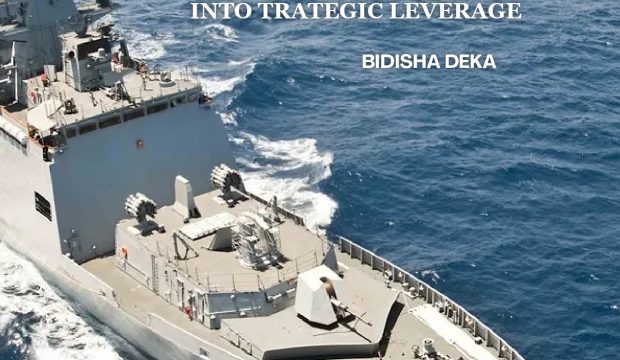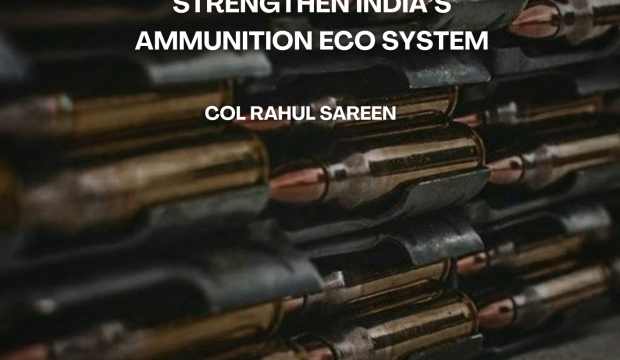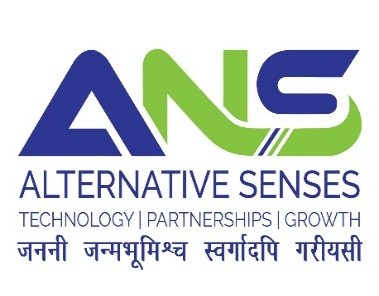Introduction
The landscape of modern warfare has changed considerably with the arrival of niche technologies. These technologies are fundamentally transforming joint war fighting capabilities. Niche technologies are characterized by their specialized and cutting-edge nature. They include a wide range of innovations like artificial intelligence, autonomous systems and advanced sensors. These technologies are boosting traditional military operations. They are also enabling exceptional levels of collaboration among different branches of the Armed Forces. The Indian Army has recently raised The Signals Technology Evaluation and Adaptation Group that will undertake research and evaluation of futuristic communication technologies.[1]
In last few years during post COVID period, I’ve been fortunate enough to coordinate and witness various Def Expos and attend various meets organized by Confederation of Indian Industries and Society of Indian Defence Manufacturers. In each of them I found an added emphasis on Niche Technologies. Recently I attended series of Def Expos and seminars under the banner of Southern Star Army Academia Industry Interface, an initiative under Southern Command of the Indian Army.[2] It was very evident during all the seminars and exhibitions that the impact of disruptive, critical and niche technologies is not just theory anymore. We need to embrace it and build our joint war fighting capabilities. The impact is now visible in various encounters and conflicts around the world. These technologies are not just in Hollywood science fiction movies anymore. The products, the companies and the people making it are very much real. Embracing such technologies in developing new warfare systems would certainly give us technological edge over the opponent. This in turn would support us to win over our enemy with relatively reduced force levels. It will also ensure that our Armed Forces suffer minimal casualties in all spectrum of war. The easy availability of modern weapons and systems with latest technologies is also a factor to be considered. We should be well prepared to handle such threats in the most cost-effective and the finest manner. It has become quite a cliché to talk about Artificial Intelligence, Unmanned systems and effect of them on changing nature of warfighting. So, I would dwell mostly upon other niche technologies and impact of them with respect to our own Armed Forces.

Source: startus-insights.com
Enhancement of Situational Awareness and Swift Decision Making
Niche technologies have enhanced our situational awareness. They have also made whole process of decision making relatively easier. Among the niche technologies C4ISR plays a major role in both situational awareness and decision making. Our Forces effectively used C4ISR assets during India Pakistan border skirmishes in 2019. The assets were used to monitor enemy activities and gather intel.[3] Commanders could make informed decisions with help of real time data fusion and analysis. It led to swift actions to prevent potential threats and minimized casualties. Integration of various C4ISR technologies has given our forces greater operational effectiveness. It has also increased the success rate of missions.
Digital twins are virtual representations of physical assets. They enable real-time monitoring and analysis.[4] In the context of joint warfighting, digital twins can provide: –
- Enhanced situational awareness
- Predictive capabilities
- Optimized resource allocation
- Decision support.
For example, we can monitor the health and performance of all our military assets in real time and become proactive towards maintenance. It will minimize downtime, reduce costs and enhance the readiness of equipment.[5]
Sensor fusion has also contributed for enhancing situational awareness. Our forces use different sensors like radars, drones and reconnaissance aircraft to monitor enemy movement. Data from different sources are merged and analyzed through sensor fusion algorithms and technologies. Then they are presented to commanders in a logical manner.[6] Sensor fusion provides exact targeting info and reduces collateral damage. It enhances precision guided weapons systems. AI enabled command and control systems streamline decision making processes by converting huge data into actionable intelligence.[7]
5G and 6G networks are providing very fast real time data sharing and huge connectivity. 5G and 6G can support AR applications. It can provide soldiers with real time battlefield information like enemy positions. It can also provide routes and navigation aids to enhance situational awareness of our soldiers.[8]
Internet of Military Things and Internet of Battlefield Things are changing the warfighting by: –
- Providing real-time battlefield monitoring
- Enhancing medical support for personnel
- Optimizing logistics
- Improving communication and coordination
- Addressing cybersecurity challenges
- Integrating wide range of military assets and devices.
IoMT devices worn by soldiers monitor vital health parameters in real time. After injuries these devices can auto alert our medical team and provide critical information for treatment.[9] In remote locations IoMT can provide telemedicine services which will enable our Battle Field Nursing Assistants to consult with Medical Specialists.
Information Processing and Perception of Threat
Edge computing significantly improves joint warfighting capabilities by processing data closer to the source. This reduces delays and enable quick responses.[10] Our forces carry out operations in remote border areas to monitor any incursions and threats. The responses have to be fast in occurrence of such scenarios. Large Language Models and Short Language Models can help immensely in this regard.
Large Language Models like GPT models can analyze large amounts of textual data like:-
- Intelligence reports
- Intercepted communications
- Social media activity
These models provide valuable info to intelligence analysts by taking out relevant information and identifying patterns. This also helps them to evaluate threats and anticipate enemy actions.[11]
Short Language Models can enable quick communication between different forces. We can combine Chatbots with our communication systems to provide instant messaging services. This will enable: –
- Quick exchange of information
- Coordination of operations
- Decision making among joint forces
Big data and Algorithmic warfare enable our forces to control huge amounts of information. They also improve threat perception and strategic planning. In border security operations our forces utilize big data analytics to process and analyze data from various sources like: –
- Satellite imagery
- Surveillance drones
- Ground sensors
- Human intelligence reports
By analyzing this data, commanders gain a comprehensive understanding of the operational environment. This includes: –
- Enemy movements
- Terrain conditions
- Potential threats
- Logistical bottlenecks
- Resource requirements
It helps simplify operations and ensure timely support for frontline troops. Big data analytics enhances intelligence gathering and analysis capabilities by identifying patterns.[12] [13]
Enhancement of Interoperability and Integration of Assets
Niche technologies facilitates different military forces to work together in a coordinated manner. By using standardized communication protocols and compatible platforms they can easily share info. For example, network centric warfare allows various assets from different domain of land-sea-air-space to exchange real time data. It creates a unified operational picture. This helps autonomous systems to deploy in a coordinated way. Each system communicates and collaborates with others to achieve mission objectives. This level of integration reduces duplication and boosts overall effectiveness of joint operations.
Multi Domain Operations focus on synchronizing capabilities across different domains. Assets from different domains like land, air, sea, space and cyberspace are integrated. The goal is to gain superiority and make decisive moves in joint warfighting.[14] Multi Domain Operations are particularly important for us because of our complex security challenges and continuous evolving threats. India recently showcased its integrated operational capabilities through joint exercise Gaganshakti.[15] Such exercises bring together the efforts of all our forces and special operations units.
India has proved its resilience and Atmanirbharta for space based operations by reducing dependence on foreign satellite systems and ensuring indigenous capabilities. Our Cartosat series of satellites have been vital for military intelligence, surveillance and reconnaissance missions. They provide high resolution imagery which aids commanders to: –
- Closely monitor adversary activities
- Assess battlefield conditions
- Plan operations with incredible detail and accuracy in different domains
We also hold a group of low cost small satellites known as Indian Regional Navigation Satellite System. These satellites give precise positioning and timing information to our forces. It also aids them to navigate and conduct missions with superior precision. [16]
Enhancing Operational Readiness
Smart materials have really changed the style of joint warfighting. They have enhanced both performance and adaptability of equipment. Shape-memory alloys and self-healing polymers are the biggest examples of smart materials.[17] If we incorporate self-healing materials into our armored vehicles, we can increase their durability and cut down maintenance time. We can also enhance our operational readiness. These smart materials facilitate more stronger yet light weight equipment. We can get highly mobile strong protective gear for our forces in all kind of terrain and operational environment.
Clean energy technologies provide major operational advantages and reduce our environmental footprint. We are strengthening our energy security by embracing clean energy sources like solar and wind power. This is also reducing our reliance on traditional fuels. With help of these energy sources, we can keep operations going smoothly even in the most far-flung areas.[18] Our Armed Forces are using solar powered tents and portable renewable energy systems. It has: –
- Improved logistical efficiency
- Reduced the need for fuel resupply
- Boosted our mobility
- Increased sustainability during joint operations
Hypersonic technology is redefining joint warfighting with its insane speed, preciseness and extended range. It is very much needed for countering regional threats by beefing up our deterrence capabilities. We can take example of our own DRDO’s HSTDV (Hypersonic Technology Demonstrator Vehicle) which is a potent strategic arsenal.[19]
Though I didn’t want to discuss unmanned systems at the beginning but I need to mention use of UAVs like the DRDO Rustom for border surveillance and the Daksh robot for bomb disposal operations. It minimizes risks to our soldiers during dangerous missions.[20]
Additive manufacturing or 3D printing is enhancing operational readiness by: –
- Enabling rapid prototyping
- Customization
- On demand production of critical components and equipment
It boosts our operational preparedness and resource efficiency.[21] In recently concluded one of the Def Expo, I interacted with several Startups and MSMEs. CEO of one of the leading companies specialized in addictive manufacturing gave the example of our Air assets. All our forces operate different kind of helicopters and aircrafts. They need regular maintenance and replacement parts. But getting those from traditional suppliers in time is a very serious problem. It takes a lot of time and costs too much which leads to delays in aircraft availability. It seriously hampers our operational readiness. But with additive manufacturing customized spare parts and components can be produced right on the spot. We do not have to wait for shipments from foreign countries. For example, a cracked cockpit instrument panel can be 3D printed and installed within hours. This in turn can reduce our dependence on traditional foreign suppliers.
Ethical and Operational Challenges
Niche technologies offer significant advantages but they also present numerous ethical and operational challenges: –
- The use of artificial intelligence and autonomous systems raise questions about accountability. We are allowing machines to make life and death decisions. There are serious ethical implications of that.
- The reliance on advanced technologies presents vulnerabilities like random cyberattacks. Operationally there can be frequent technological failures. Maintaining the resilience of these systems over the years is a continuous challenge.
- Synthetic biology can provide rapid and tailored made treatments for each soldier. Genetically engineered microbes can produce medicines on demand by mitigating logistical challenges in remote areas. Gene editing technologies like CRISPR-Cas9 can enhance soldier performance in all environments.[22] However any exploration of such bio and gene technologies for our forces would require careful evaluation to ensure ethical principle.[23]
It is imperative to ensure the responsible and ethical use of these potent technologies within the bounds of international law.
Absorbing the Technologies
We are deeply involved in sub-conventional operations for very long time now but we need to understand that our Force structure is designed primarily to fight big scale conventional wars. If we see the recent wars and conflicts between Armenia and Azerbaijan, Russia and Ukraine, Israel and Palestine we can experience the changing style of warfighting. The serious impact of niche technologies on warfighting is also very obvious from those conflicts. This year the Indian Army is focusing on absorbing technology by calling it the ‘Year of Technological Absorption.’[24] The Navy and Air Force have been absorbing technologies for a long time. However, our Armed Forces face several challenges when it comes to adopting niche technologies. These challenges include: –
- Bureaucratic and Procurement Hurdles- The defence procurement process in India is regularly criticized for being too slow and too much bureaucratic. Excessive red tapism makes it difficult to get approvals. Dealing with export control regulations and navigation through the whole system is a daunting task for most of the manufacturers. The acquisition of new technologies gets delayed because of that.
- Budget Constraints- Our defence budget for procurements is very limited. We ranked fourth globally in defence expenditure in 2023 by spending $83.6 billion. However nearly 80 percent of the spending comprised of personnel and operational cost. Capital outlays for military procurement accounted for only 22 percent of the budget in 2023.[25] The cost of advanced technology can severely put stress our allocated limited financial resources. Maintaining a balance between spending on existing capabilities and investing in new technologies is a big challenge with budget constraints.
- Lack of Indigenous Manufacturing Capabilities- There is huge push for ‘Atmanirbharta’. Government is relentlessly pushing for establishment of indigenous manufacturing infrastructure with adequate R&D ecosystem. However, we need to understand that our indigenous defence manufacturing sector is yet to be developed fully. We are still very much dependent on foreign technology and equipment. Importing them lead to delays. It also complicates technology transfer and indigenization. It is very common for foreign vendors to withhold patents and intellectual property rights. Most of them charge excessive prices for niche technologies.
- The Need for a Skilled Workforce- Handling and maintaining advanced systems are complex tasks. It requires a highly skilled workforce. Continuous training and upskilling of personnel are necessities to match pace with technological advancements. Our Forces end up using outdated systems most of the time because we face delays in upgrading programs. The challenge is to ensure continuous integration with existing systems for which the workforce must be continuously upskilled.
- Limited Research and Development Investment- Adequate investment in research and development is very much required for developing indigenous technologies. If we take example of countries producing latest techs, we will find that their initial R&D expenditure surpasses their manufacturing expenditure also. Our R&D efforts face continuous funding issues and lack of infrastructure. There are various problems in collaboration between defence agencies and the private industry. We are yet to develop any revolutionary niche technology or weapon system. Our overall researcher density is very low. We spend only 0.8% of our GDP on our R&D. This has made us one of the largest importers of fighting equipment in the world.[26] [27]

Source: drishtiias.com
- Supply of Critical Components- We are mostly dependent on foreign suppliers for critical components for most of our systems. Supply of the items is prone to frequent delays and disruptions for various reason. Maintaining operational readiness of our equipment is a big challenge with lack of supply of critical components.
- Policy and Regulatory Challenges- Our policies and regulatory frameworks are complex and very slow in evolving as per changing circumstances. Various public agencies have overlapping authority for technology acquisition. Very often different departments take out policies on the same subject. Niche technologies are complicated and surpass national boundaries. Coordinating with regulators across borders is a challenge as there are no global regulatory standards.[28]
- Resistance to Change- Organizational resistance to adopting new technologies are slowing down our modernization process. I personally feel it is the most difficult challenge we face today in our forces. Resistance comes from the very ground level whenever any new technologies are being infused.
These are the various challenges we face today. The Indian government and our Armed Forces are well aware of the challenges. They are already taking steps to mitigate them to ensure effective absorption and utilization of niche technologies.
Recommendations
Addressing these challenges requires a multifaceted approach. These reforms need major involvement from all government machineries. I’ve few functional level recommendations: –
- Creation of Dedicated Technology Cells- We need to establish dedicated R&D units within the Armed Forces focused on niche technologies. We also need to create specialized units focused only on acquiring and integrating niche technologies. These cells can work closely with defense research organizations and private sector innovators.
- Public-Private Partnerships- Our 60 percent domestic defence industry is government owned. The public sector which includes National Technical Research Organisation, Council of Scientific and Industrial Research, Physical Research Laboratory, Defence Research and Development Organisation, defence shipyards and Defence Public Sector Undertakings need more collaborations with private tech companies, startups and academic institutions. This will help leverage cutting-edge research and development in niche areas. For that close coordination is required with various industrial bodies like Confederation of Indian Industries, Society of Indian Defence Manufacturers etc.
Setting up Innovation Hubs and Incubators- We need to set up innovation hubs and incubators within military establishments to encourage internal and external innovation. These hubs can provide resources and support to develop and test new technologies. We can take a que from Atal Incubation Centres for setting up of innovation hubs. We need to facilitate more startups and small enterprises through more initiatives like the Innovations for Defence Excellence (iDEX) and Defence Testing Infrastructure Scheme (DTIS).
- Awareness about the Problem Statements- Based on my personal experience I’ve found most of the time our requirements are not fulfilled as the academia and industry are not aware of the problem statements. We need to publicize our initiatives at larger level to spread awareness about the problem statements so that people participating in various innovation challenges are aware about our requirements. Close coordination with NITI Aayog in this regard can help in a big way.
- Specific Budget Allocation- In the Interim Union Budget 2024-25, the capital allocations for modernisation and infrastructure development of defence services has been increased by 9.4 percent over FY 2023-24.[29] This demonstrates a clear commitment to modernization. However adequate funding needs to be allocated specifically for the acquisition and integration of niche technologies. Also, more separate fund like DRDO’s Technology Development Fund should be created for R&D purposes.
- Streamlined Procurement Processes- The government has taken various steps like de-regulation, de-licensing, promote export and foreign investment liberalization to support the domestic defence industry. However, we need to understand that at present we need to procure most of the niche technologies from foreign vendors only. We need to simplify and accelerate procurement procedures to facilitate faster acquisition and integration of advanced technologies. This will involve revising current policies and adopting more flexible acquisition models.
- Continuous Training and Education- We need to regularly update our training programs to include new technologies and their applications. This training must be imparted to our soldiers at the training Centre only. Presently being in a training Centre I can well understand the inhibitions of our soldiers for using advanced technologies. If we can integrate new technologies and their application as a regular subject at the very beginning of their training, it will ensure that our soldiers are proficient and can effectively use advanced systems without any self-doubt.
- Field Trials- We need to thoroughly study all offers from foreign vendors before making any sort of deals. We need to evaluate if the particular technology will remain relevant in the future or not by conducting field trials. This will also help in identifying practical applications and any potential issues before full-scale implementation in any real scenarios.
- IT Infrastructure- We need to Invest more to modernize IT infrastructure to support advanced technologies. We also have to ensure secure communication and data handling. This is a continuous process and will be requiring heavy operational cost.
- International Collaboration- Our forces must stay up-to-date about global advancements and best practices. For that we need to engage more in joint exercises, research projects and technology sharing agreements with associated nations. We need to ensure that the technology sharing agreements help us to become self-reliant rather than making us more dependent on the foreign entity for critical support and components.
- Establishment of Feedback System- We already have well established mechanisms for feedback in our armed forces. We need to implement the same for absorption of niche technologies. Feedback from Field units using new technologies need to be taken at regular interval for continuous improvement and adaptation based on everyday experiences.
- Cultural Shift- We are striving very hard to absorb the latest technologies and a lot is being done. However, we need to bring a cultural shift within the Armed Forces to embrace innovation. Right from the grassroot level the we need to continuously make the soldiers understand about the changing nature of warfighting and how absorbing niche technologies will help us win. The hesitation of using latest technologies must go away at the very ground level.
We need to understand that implementation of these recommendations is a time-consuming process. Few of them we have already started implementing at various levels. However, our efforts have to be more intensified if we want to maintain a strategic edge in an intense global defence environment driven by technology.
Conclusion
The integration of niche technologies in joint warfighting efforts really beefs up our capabilities. It gives us strategic advantages on the battlefield. These advanced technologies help us to make decisions quicker and deploy our forces more effectively. Our Armed Forces can work together even better with different branches by using the tools. There is no denying the fact that many challenges will come with adopting niche technologies. We must make sure we address cybersecurity, technological compatibility and the ethical questions about autonomous systems. We need to keep investing in innovation and training. We also need to make firm policies to fully tap into the potential of these technologies. On the other hand, we also have to manage the challenges to tap the full potential of niche technologies to excel in joint warfighting.
DISCLAIMER
The paper is author’s individual scholastic articulation and does not necessarily reflect the views of CENJOWS. The author certifies that the article is original in content, unpublished and it has not been submitted for publication/ web upload elsewhere and that the facts and figures quoted are duly referenced, as needed and are believed to be correct.
References
- “Army raises elite unit to work on critical technologies having military applications” (March 18, 2024), thehindu.com
- Pratham Gurung, “Inaugural Southern Star Army Academia Interface Seminar Concludes Successfully in Coimbatore” (May 31, 2024), ssbcrack.com.
- “2019 Balakot airstrike’’, wikipedia.org
- Swetha Rao, “Leveraging Digital Twins: A Revolution in Military Operations” (May 28, 2024), geointelligence.net.
- “How Digital Twins are revolutionizing the Defence Industry”, clooned.com
- Rajesh Uppal, “Military Sensor Fusion technology enhances situational awareness of Air, Sea and Space-based platforms and Remote Intelligence” (Jun 29, 2021) idstch.com/technology.
- Wes Haga and Courtney Crosby, “AI’s Power to Transform Command and Control” (Nov 13, 2020), nationaldefencemagazine.org.
- “Army developing military-grade 5G & 6G apps; focuses on rolling out emerging technologies” (Dec 06, 2023), economictimes.com.
- “Applications of Internet of Things (IoT) in Defence and Military” (Jan 11, 2022), Shiksha Online.
- Mike Sewart, “Transforming Defence: Edge Computing” (Mar 03, 2022), qinetiq.com.
- Benjamin Jensen and Dan Tadross, “How large-language models can revolutionize military planning” (April 12, 2023), warontherocks.com.
- Emma Helfrich, “Exploiting big data for defence” (August 04, 2021), militaryembedded.com.
- Benjamin Jensen, Christopher Whyte, and Scott Cuomo, “The future of Algorithmic Warfare: Fragmented Development” (July 20, 2023), warontherocks.com.
- Maj Kimber Nettis, “Multi-Domain Operations: Bridging the Gaps for Dominance” (March 16, 2020), airuniversity.af.edu.
- Air Vice Marshal Anil Golani (Retd), “Exercise Gagan Shakti 2024: Enhancing Operational Preparedness” (April 08, 2024), capsindia.org.
- Kartik Bommakanti, “Strengthening the C4ISR Capabilities of India’s Armed Forces: The Role of Small Satellites” (June 2020), ORF Occasional Paper No. 253, Observer Research Foundation.
- Mert Yildirim, Zeki Candan, “Smart materials: The next generation in science and engineering” (October, 2023), researchgate.net.
- Sgt. Maj. Isaac Migli, “The Use of Renewable Energy Sources in the Military” (June 26, 2020), armyupress.army.mil.
- “DRDO successfully flight tests Hypersonic Technology Demonstrator Vehicle” (Sep 07, 2020), Press Information Bureau, Ministry of Defence.
- “DRDO Rustom UAV: Advancing Aerial Survillance” (Mar 26, 2024), srirsmsias.com
- Larry R. Holmes Jr., “Additive Technology Revolutionizes Defence Manufacturing” (Jul 06, 2023), nationaldefencemagazine.org.
- Kyle E. Watters, a Jesse Kirkpatrick, b Megan J. Palmer, c and Gregory D. Koblentz, “The CRISPR revolution and its potential impact on global health security” (Feb 16, 2021), ncbi.nlm.nih.gov.
- Alexander Muacevic and John R Adler, “Ethical Perspectives of Therapeutic Human Genome Editing from Multiple and Diverse Viewpoints: A Scoping Review” (Feb, 2021), ncbi.nlm.nih.gov.
- “2024 to be year of Technological Absorption” (Jan 15, 2024), ndtv.com.
- “Global defence budget: How much India, Pakistan and China spend on military: Top 10 list” (April 22, 2024), hindustantimes.com.
- “Defence research budget insufficient to make India global power: Parliamentary panel” (Dec 20, 2023), economictimes.com.
- “India’s spending on Defence R&D less than 1%; far less than US, China: Parl Panel” (Mar 17, 2022), businesstoday.in.
- “Transformative technologies challenges and principals of regulation” (May 08, 2024), digitalregulation.org
Manan Jaisinghani, “Defence Manufacturing in India”, investindia.gov.in











































